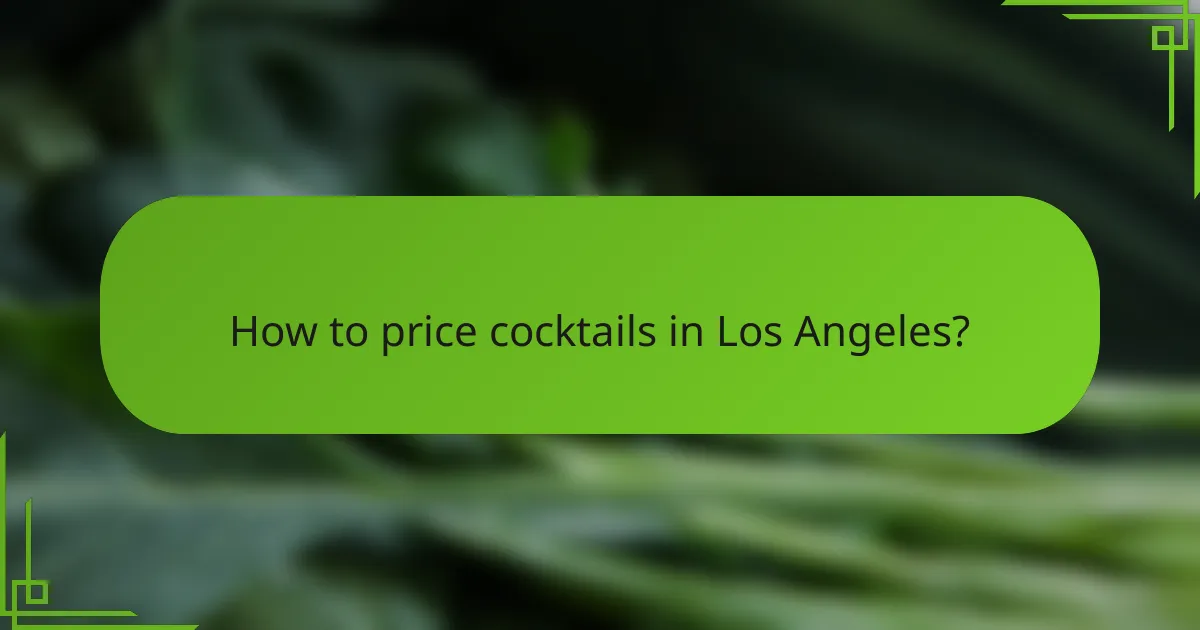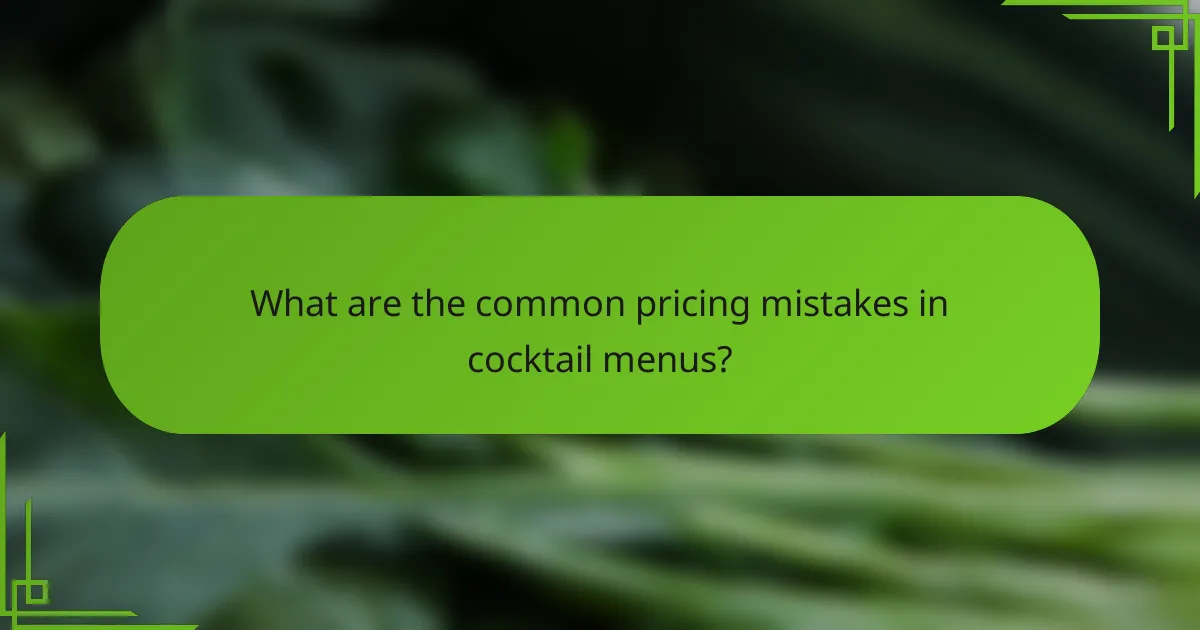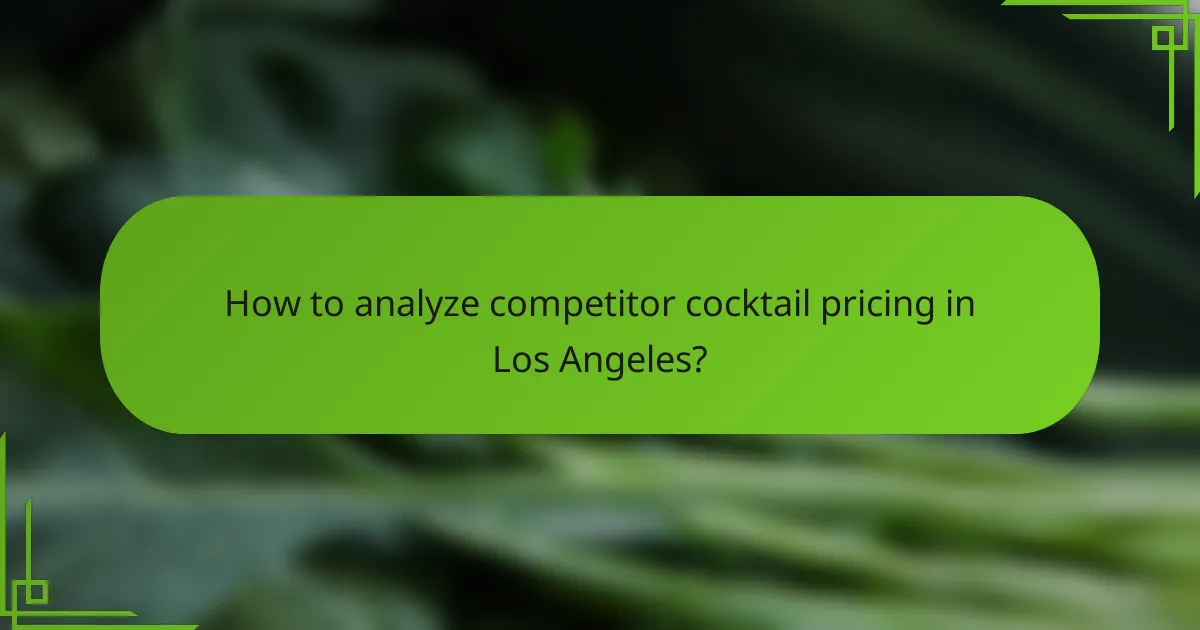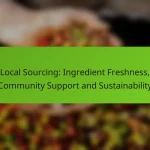Effective cocktail pricing is essential for bars and restaurants, especially in competitive markets like Los Angeles, where costs, trends, and customer perceptions play a pivotal role. With profit margins typically ranging from 70% to 80%, understanding the balance between profitability and customer satisfaction is crucial for success. Additionally, how customers perceive value and quality can significantly influence pricing strategies and overall sales performance.

How to price cocktails in Los Angeles?
Pricing cocktails in Los Angeles involves considering costs, market trends, and customer perceptions. Establishments typically aim for a balance between profitability and attracting patrons, often adjusting prices based on local competition and consumer behavior.
Cost-plus pricing strategy
The cost-plus pricing strategy involves calculating the total cost of producing a cocktail and adding a markup to ensure profit. For instance, if the ingredients and overhead for a cocktail total $5, a bar might charge $10, applying a 100% markup. This method is straightforward but may not always align with what customers are willing to pay.
When using this strategy, it’s essential to regularly review costs, especially in a dynamic market like Los Angeles, where ingredient prices can fluctuate. A common pitfall is neglecting to factor in labor and overhead costs adequately.
Market-based pricing strategy
Market-based pricing focuses on setting cocktail prices based on competitors’ rates in the Los Angeles area. This strategy requires thorough research of local bars and restaurants to determine average prices for similar offerings. For example, if most bars charge between $12 and $15 for a signature cocktail, pricing within this range can help maintain competitiveness.
While this approach can attract customers, it may lead to lower profit margins if not balanced with cost considerations. Regularly monitoring competitors and adjusting prices accordingly is crucial to remain relevant in the market.
Value-based pricing strategy
The value-based pricing strategy sets prices based on the perceived value of the cocktail to the customer rather than just the cost or market rates. In Los Angeles, unique ingredients, presentation, and the overall experience can justify higher prices. For example, a cocktail featuring rare spirits or artisanal mixers might be priced at $18, appealing to customers seeking exclusivity.
To effectively implement this strategy, bars should communicate the unique aspects of their cocktails, enhancing perceived value. However, it’s important to avoid overpricing, as this can alienate potential customers who may feel the price does not match the experience offered.

What are the profit margins for cocktails?
The profit margins for cocktails typically range from 70% to 80%, depending on various factors such as ingredient costs and pricing strategies. Understanding these margins is crucial for bar owners and mixologists to ensure profitability while maintaining customer satisfaction.
Average profit margin range
On average, cocktails yield profit margins between 70% and 80%. This means that if a cocktail sells for $10, the cost of ingredients might be around $2 to $3. High-end establishments may achieve even higher margins by using premium spirits and unique ingredients.
Factors affecting profit margins
Several factors influence the profit margins of cocktails, including ingredient costs, labor, and overhead expenses. Seasonal variations in ingredient prices can also impact profitability, as can the establishment’s location and target market.
Pricing strategies play a significant role as well. For example, offering happy hour specials can attract more customers but may lower individual profit margins. Conversely, premium pricing for signature cocktails can enhance margins if customers perceive added value.

How does customer perception influence cocktail pricing?
Customer perception significantly impacts cocktail pricing, as it shapes how consumers view value and quality. A well-crafted cocktail that aligns with customer expectations can command higher prices, while negative perceptions can lead to decreased sales and lower profit margins.
Branding and pricing perception
Branding plays a crucial role in shaping pricing perception. A strong brand identity can create an impression of exclusivity and quality, allowing establishments to charge premium prices. For example, a cocktail from a renowned mixologist or a high-end bar may be priced higher due to the perceived value associated with the brand.
To leverage branding effectively, businesses should focus on consistent messaging and visual identity. This includes everything from the cocktail menu design to staff uniforms, which should all reflect the brand’s image. Engaging storytelling about the ingredients or the cocktail’s origin can also enhance perceived value.
Quality perception and pricing
Quality perception directly affects how customers evaluate cocktail pricing. High-quality ingredients, expert preparation, and unique presentations can justify higher prices. For instance, a cocktail made with organic spirits and fresh, locally sourced fruits may be seen as worth the extra cost compared to a standard offering.
Establishments should ensure that the quality of their cocktails matches the price point. Regularly soliciting customer feedback can help identify areas for improvement. Additionally, offering tasting events or limited-time specials can create excitement and reinforce the perception of quality, encouraging customers to pay more for their cocktails.

What are the best practices for cocktail pricing strategies?
Effective cocktail pricing strategies focus on maximizing profit while ensuring customer satisfaction. Key practices include understanding market demand, analyzing costs, and considering customer perceptions to set competitive yet profitable prices.
Dynamic pricing techniques
Dynamic pricing involves adjusting cocktail prices based on real-time demand and market conditions. For instance, during peak hours or special events, prices can be increased to capitalize on higher customer willingness to pay. Conversely, during slower periods, discounts can attract more patrons.
Implementing dynamic pricing requires monitoring sales data and customer behavior. Establishing a clear framework for when and how to adjust prices can help avoid alienating customers while optimizing revenue.
Seasonal pricing adjustments
Seasonal pricing adjustments take advantage of fluctuations in demand throughout the year. For example, refreshing cocktail menus with seasonal ingredients can justify higher prices during peak seasons, such as summer or holidays. Conversely, offering lower prices during off-peak times can help maintain customer interest.
Consider local events and holidays when planning seasonal pricing. Tailoring cocktails to fit these occasions can enhance customer experience and drive sales, while also allowing for strategic price increases.
Promotional pricing strategies
Promotional pricing strategies involve temporary price reductions to stimulate sales and attract new customers. Happy hours, bundle deals, or special discounts on certain days can effectively draw in crowds and encourage repeat visits.
When implementing promotions, ensure they align with overall pricing strategies. Avoid deep discounts that could devalue your brand. Instead, focus on creating perceived value through limited-time offers or exclusive cocktails to enhance customer engagement and loyalty.

What are the common pricing mistakes in cocktail menus?
Common pricing mistakes in cocktail menus include setting prices too high based on fleeting trends or too low due to a lack of understanding of ingredient costs. These errors can significantly impact profitability and customer perception.
Overpricing based on trends
Overpricing cocktails based on current trends can alienate customers who may not perceive the value in a high-priced drink. While it’s tempting to charge more for trendy ingredients or unique presentations, this strategy can backfire if customers feel the price exceeds the quality or experience offered.
To avoid this pitfall, consider a balanced approach. Research competitor pricing and gauge customer willingness to pay. A good rule of thumb is to keep cocktail prices within a range that reflects both ingredient quality and local market standards, typically between 8-15 USD in many urban areas.
Underestimating ingredient costs
Underestimating the costs of ingredients can lead to unsustainable pricing strategies. Many establishments fail to account for the full range of expenses, including seasonal price fluctuations and waste, which can erode profit margins.
To ensure accurate pricing, regularly review ingredient costs and adjust cocktail prices accordingly. A practical tip is to calculate the cost of each cocktail and aim for a markup of at least 200-300% to maintain profitability while remaining competitive.

How to analyze competitor cocktail pricing in Los Angeles?
To analyze competitor cocktail pricing in Los Angeles, start by gathering data on what similar bars and restaurants charge for their cocktails. This involves checking menus online, visiting establishments, and considering factors like location, ambiance, and target clientele.
Benchmarking against local bars
Benchmarking involves comparing your cocktail prices with those of local bars to identify trends and standards in the area. Focus on bars with similar themes or clientele to ensure relevant comparisons. For instance, if a trendy bar charges around $12 to $15 for craft cocktails, consider positioning your prices within that range to remain competitive.
Evaluate not only the prices but also the quality and presentation of the cocktails. A bar charging $14 for a well-crafted cocktail with premium ingredients may justify its price better than one offering a basic drink at the same price point. This insight can help you refine your own pricing strategy.
Using pricing software tools
Pricing software tools can streamline the process of analyzing competitor cocktail pricing by aggregating data from multiple sources. These tools often provide insights into pricing trends, customer preferences, and competitive positioning, which can inform your pricing decisions. Look for software that offers features like market analysis and price optimization.
When selecting a pricing tool, consider those that focus on the hospitality industry and provide localized data for Los Angeles. This will ensure that the insights you gain are relevant and actionable. Regularly updating your pricing strategy based on these insights can help maintain competitiveness and improve profit margins.


